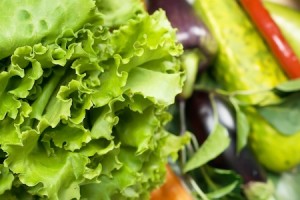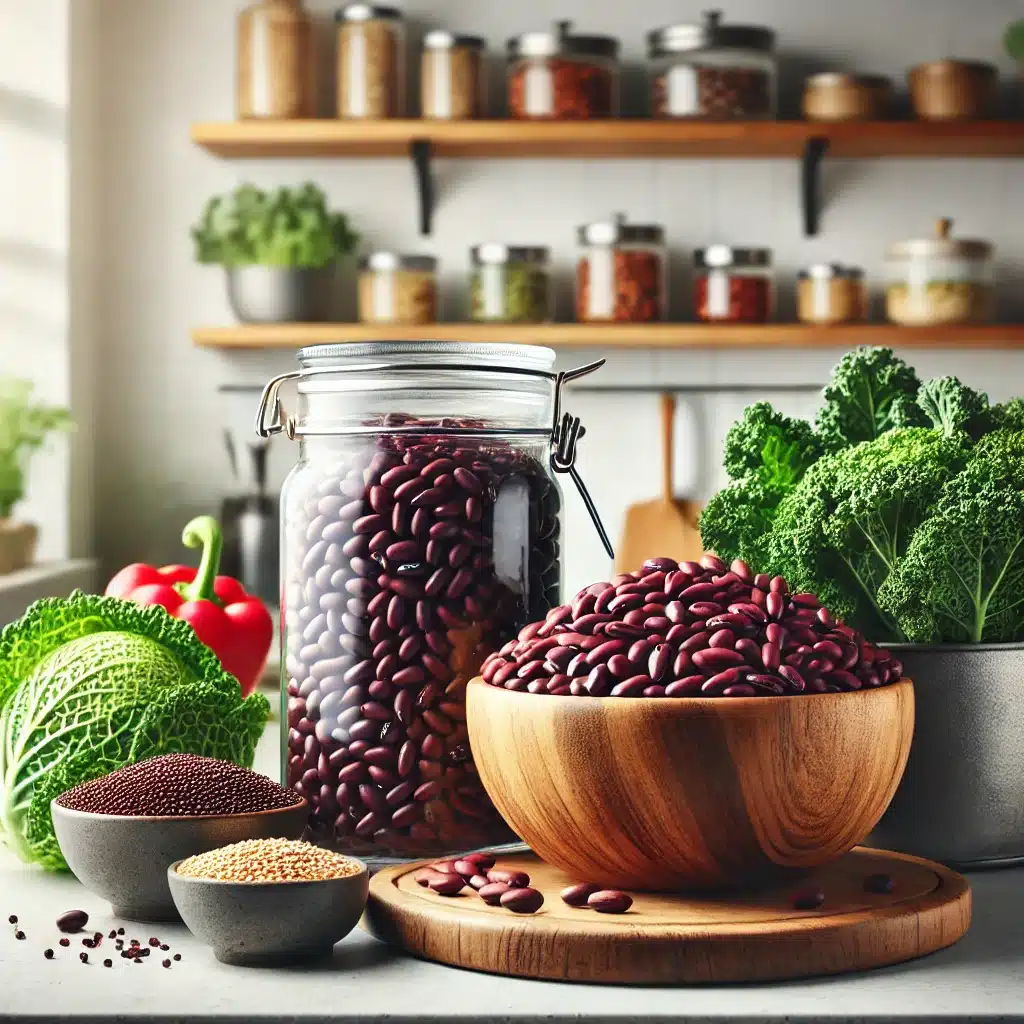 With spring in full swing, most gardeners already have their gardens in, farmer’s markets are opening up, and even the local grocery stores are carrying a variety of spring vegetables. No matter where one falls in the preparedness continuum, we can all benefit from eating more vegetables. Here are ten spring vegetables you are likely to encounter, and what to do with them.
With spring in full swing, most gardeners already have their gardens in, farmer’s markets are opening up, and even the local grocery stores are carrying a variety of spring vegetables. No matter where one falls in the preparedness continuum, we can all benefit from eating more vegetables. Here are ten spring vegetables you are likely to encounter, and what to do with them.
1. Asparagus. Asparagus can be quite costly at the grocery store, and one might think that it is difficult to grow or a rare food item. On the contrary: it is a perennial plant that is easy to grow and maintain once it is established. Whether you purchase it from the store, discover it growing wild, or grow your own, it can be a welcome addition to your spring meals. Asparagus can be steamed, sautéed, roasted in the same oven as your chicken or other main dish, added to quiche and similar casseroles, incorporated into a bruschetta (a fancy word for toasted bread with a tasty topping), or made into a cream soup. My personal favorite: lightly oiled and grilled for just a few minutes—it doesn’t take long! Pick your asparagus when it is young. The spears should be about four to six inches long, and the tips should be tightly closed.
A Special All-natural Plant-growth Formula To Grow Big, Juicy Vegetables…
2. Radish. Radishes are one of the most widely recognized, classic spring vegetables. They have a very short seed-to-harvest growing time, they love cool weather, and they are transport-friendly so as to make it into most grocery stores. They are mostly recognized as an addition to green salads and spring veggie trays. But don’t stop there; chop them up and add them to potato salads, pea salads, and pasta salads to add more interest.
For a change of pace, the green radish tops can be incorporated into potato soup to give it a nutrition boost. Chop the greens and add them to the pot when you add your potatoes. If your family turns their nose up at green things in their soup, puree the soup in the blender. Serve with sliced radishes on the side.
If you are feeling especially daring, heat up your grill and make a foil packet with sliced radishes, garlic, butter, salt and pepper, and an ice cube (for moisture). Grill about twenty minutes on high heat. This will make a tasty, healthy side dish to your grilled meat items.
3. Arugula. Also known as rocket, arugula is often described as peppery. This green is a great addition to a spring salad or to be eaten as cooked greens, much like spinach. This is not only good for salads, though. Try chopping it up and adding it to your next homemade pizza. You can also use it as an herb by finely chopping and adding it as a garnish to pasta dishes just before serving to add extra color and flavor (not to mention an added kick).
Arugula is best started in cooler weather. The warmer the weather, the more likely the leaves will tend toward bitterness. It can be grown in a container or directly in your garden. As it grows, pick the smaller leaves, leaving the middle main stem to grow. Come midsummer, it can be cut back rather aggressively and still come back and produce more greens for you to enjoy in the fall when the weather cools.
If you decide to grow arugula on your own, an easy method of raising it the following year is to allow it to go to seed in the garden in the fall. Arugula tends to reseed itself fairly easily, and you will almost surely have some come up voluntarily in the springtime. Just pop over to your garden and locate it. Take a picture of your arugula in the summertime as a reminder of what the leaves look like. This will help you to identify it in the springtime.
4. Beets. A relative of spinach, beets offer their token red roots for our enjoyment, whether boiled, roasted, or pickled with eggs (one of the few ways my kids will eat them without complaint).
If you are fortunate to have found beets with the leaves intact, you are in luck; these offer a lot of nutrition and plenty of flavor. Wash, chop, then boil or steam them. Some people like them with a little butter and salt; others like them with a sprinkling of sugar and a dash of vinegar on the top. Another option is to sauté the chopped greens with garlic in a bit of olive oil. Delicious!
5. Peas. There are many varieties of peas to choose from, ranging from snow peas to sugar snap peas to the classic French garden pea. We all know and recognize the serving of boiled peas sitting by the mashed potatoes around Easter time. Perhaps it’s time to broaden your horizons? Try eating snow peas freshly picked as a snack by themselves (or in ranch dip, if you must). Throw them into stir-fries and soups. For your standard peas, make a pea salad (don’t forget the radishes!).
If you have more peas than you could ever use up before they go bad, peas are a cinch to freeze: simply blanch for two to three minutes, cool in ice water, portion out into freezer bags, and freeze.
6. Rhubarb. Rhubarb is another perennial that is easy to take care of from year to year once it has been established. Just a few plants should provide plenty of rhubarb for the summer and to freeze for the rest of the year. The leaves are poisonous; discard those and save the stems.
Many a gardener has been known to walk their property while chewing on a tart rhubarb stem, but there are many additional ways to use rhubarb. Once chopped, rhubarb can be made into pies, cobblers, bars, tarts, cakes, jams and jellies, and the ubiquitous strawberry-rhubarb Jello salad that our grandmothers used to make. But the options don’t stop there; it can also be pickled, made into soup, and used to make wine and other beverages. If you’ve had it all these ways and still have more than you can use, it is easily frozen. Simply slice it up, toss it into freezer bags, and freeze.
7. Chard. Another relative of spinach, chard is a spring green that is easy to grow and is packed with nutrients. I often crave chard come spring and can’t wait until it is ready to pick out of the garden! Chard greens, much like beet greens, can be boiled, sautéed and steamed. Younger leaves are a great addition to a green salad. I have had some luck in roasting the stems in a bit of olive oil and seasoning. The stems can also be pickled and enjoyed later in the season. A very eye-appealing variety of chard is Five-Color Silverbeets. It is a mix of many colors and will likely be the conversation piece of your garden.
8. Lettuce. Though lettuce is offered year round in the grocery stores, you can broaden your horizons by planting your own or purchasing from or bartering with someone local to you that grows it. Don’t limit yourself to the standard iceberg and Romaine. There are plenty of varieties, from cut-and-come again lettuces, to other related greens that can add interest and nutritional value to your meals. A current favorite of mine is an heirloom called Forellenschluss, a Bibb lettuce that sports freckled red spots.
Salad is the usual way of consuming lettuce, but if you find yourself up to your ears in it, consider making green smoothies for your family. They’re a great way to use up your greens and get a lot of vegetables into your family in a short time!
If left to go in the garden, lettuce will often reseed itself and come up on its own the following year. You will need to pay attention to where it comes up and move it to the proper location of the garden come spring.
9. Kale. The nutritional powerhouse of the cabbage family, kale is easily grown in spring’s cool soil. In fact, it can be planted the year before and left to come up when the weather gets warm enough. Sometimes, depending on your planting zone, a plant grown the previous year and left in the garden over the winter will still produce greens. The plant will not be as healthy and full as in the previous year, but it will provide some leaves for harvest before going to seed. This is also true for beets and chard.
Kale tends to have a stronger flavor than most other greens, and it can be an acquired taste for some. However, it can be enjoyed in a variety of ways. When chopped, it makes a good addition to soups. It can also be sautéed, much like cabbage. Another idea that has been circulating the Internet the last year or so has been to make chips out of it. This method basically involves cutting the kale to a manageable size, rubbing it on both sides with oil, seasoning with salt and whatever else sounds good, and baking in a hot oven until crispy. This is far healthier than the processed potato chip counterpart, and surprisingly a lot of people who otherwise hate this veggie love kale chips. Give it a try!
Last year, I had more kale than I could use and an Excalibur food dehydrator begging to do some work. So, I washed the kale, dried it, and cut off the meaty stems. I then cut the kale into chip-sized pieces and laid them on the dehydrator trays and put them in the dehydrator (temperature will depend on your opinion of raw food vs. conventional food drying). After less than a day, I had my own dried kale to crumble into soups in the winter. I stored the dried kale in freezer bags with as much air pressed out as possible.
10. Allium family. The allium family, in layman’s terms, is the onion family. Most plants in the allium family are very cold hardy and add flavor and variety to many meals. Members of the allium family include onions, chives, garlic, wild onions, walking onions, leeks and shallots. All members can be used as a garnish to meals and an addition to salads. Garlic especially offers immune boosting benefits, and all plants from the allium family have antibacterial and antifungal properties—something good to note.
A delicious way to enjoy your onions and garlic is to slice them up into a pan with a splash of olive oil and sauté them until they are soft and just starting to turn brown. Sliced mushrooms are a welcome addition if you have them. You can serve this mixture as a side dish, use it to top homemade pizza, or crack an egg into the pan towards the end of cooking to add some protein and make a quick lunch.
Even though summer has only just begun, there are plenty of vegetables around for your enjoyment. I encourage you to venture out to your local market or to your garden and pick up a few new ones to experiment with. Try a few foods outside your comfort zone this spring – you never know what you will like until you try it!
©2012 Off the Grid News











